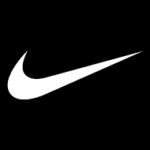Who wrote the creative brief: Human or ChatGPT?
Nike is the brand that empowers athletes to push their limits and achieve greatness, especially during the Olympics
OR
How do we communicate the idea that to the Nike athlete, “Sport is war minus the killing.” George Orwell

The story
In April of 1995, W+K and Nike went off site to discuss strategy for the 1996 Olympics campaign.
To set the context, there were a few important considerations:
- The media budget for Nike’s campaign was going to be a fraction of other advertisers’ paid media investments
- 1996 marked the 100th anniversary of the modern Games, making it the most saturated Olympics advertising environment ever
- Nike was not an official sponsor, so its media placement options were limited in the host city, Atlanta
All told, it was clear that the campaign needed to be something powerful.
Knowing that Nike is a performance athletic brand, the agency knew the insight for the campaign had to come from the POV of the athlete (unlike, say, Coke or ESPN that comes at it from the fan perspective).
After reviewing all of the previous Olympic sponsor advertising from the past, most of the work missed a key insight uncovered during a months long research study with Nike athletes: despite the heartwarming environment around the GAMES, athletes possess a near pathological desire for victory in Olympic COMPETITION.
That was a truth that had never been told by Nike, nor exposed by any other brand. Under normal circumstances, it might not have been the best approach, but given what Nike was up against, it had the potential to – as Phil Knight used to say – “wake up the consumer.”
The initial direction was then crystallized and brought to life in a brief by Evelyn Monroe and John C Jay (including the George Orwell quote “Sport is war, minus the killing”), in what turned out to be a new model for how to brief Nike creative.
The resulting campaign rocked Atlanta and was the most talked-about advertising during the Olympics: Andre Agassi smashing a paparazzi camera, Bob Kampeinen throwing up all over his Nike shoes, blood flying from a boxer’s mouthguard, athletes getting taken off the pitch on a stretcher, Tony Kaye directing, “Search & Destroy” by Iggy Pop, a shoot manifesto that demanded product shots look like “sawed-off shotguns resting on a pillow of raw meat” and the controversial outdoor headline in Atlanta, “You don’t win silver, you lose gold.”
The moral of the story is that ChatGPT’s brief got a fair bit right, so let’s unpack it.
- It knows it’s about the athlete
- It talks about athletes pushing limits and achieving greatness
- It defines the role of Nike in terms of empowerment
- It doesn’t inject the idea of product into the brief (which might have been expected); so it understand a brand lens
However, it’s a bit generic. You could insert any performance sport brand into that sentence and it wouldn’t be wrong.
What ChatGPT is missing is a few things:
- Brand linkage: Nike is the goddess of victory in Greek mythology, so where is the attitudinal ‘winning spirit’ part?
- It doesn’t delineate between the Olympic Games and Olympic Competition, opening up the possibility that the campaign could be about the aspects of the Olymics that aren’t about competition
- Creative inspiration: any good advertiser or marketer would know ChatGPT’s starting point intuitively, but creative teams would likely be uninspired to begin working on the campaign
It doesn’t mean ChatGPT won’t get there one day, but for now, our money’s on Humans when it comes to highly differentiated creative briefs.
The world’s most innovative companies use Fabric.






Nike Innovation Kitchen
Researcher,
Athlete Concepts
The platform is so good at unearthing insights because their bespoke recruiting helps us hear from the exact audience we’re looking for.

Wieden + Kennedy
Angela Jones,
Group Strategy Director
When COVID-19 hit, we worked with the team to field a quick consumer study on a Saturday. We needed to gauge whether the work would hit the right tone. With results by Sunday, the study gave clients the confidence to launch the campaign.

Omnicom Media Group
Abby Thorsgaard,
Primary Research Manager
With a tight deadline to conduct research, develop a sizzle reel, and deliver a pitch, Fabric was an integral part of getting the project done quickly.